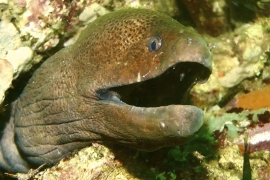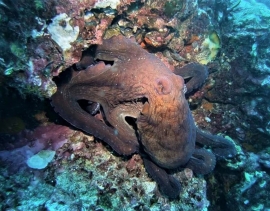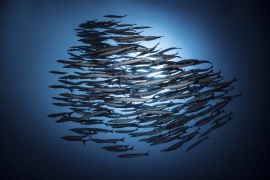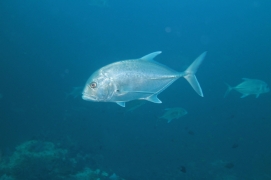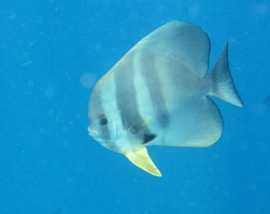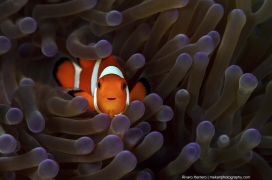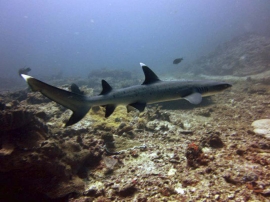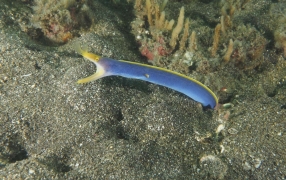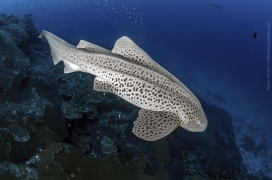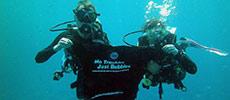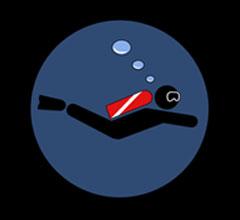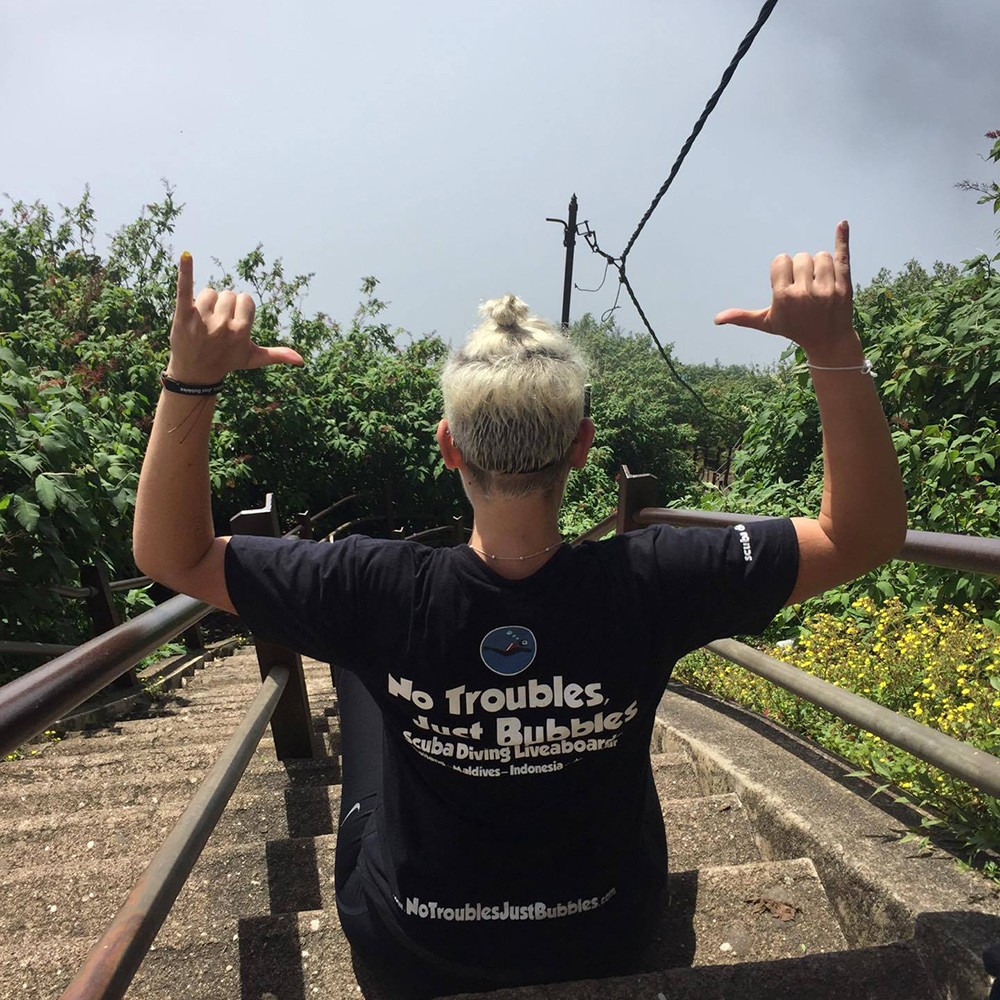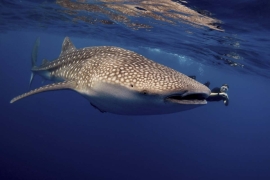
Koh Doc Mai Liveaboard Diving
This small uninhabited island near to Phuket is just 250 metres long and 90 metres wide. On each side there is abundant marine life from the surface to the sandy seabed. Koh Doc Mai is often overlooked by dive centres in favour of teh big-name dive sites in the area, but in many ways Koh Doc Mai is better than them all.
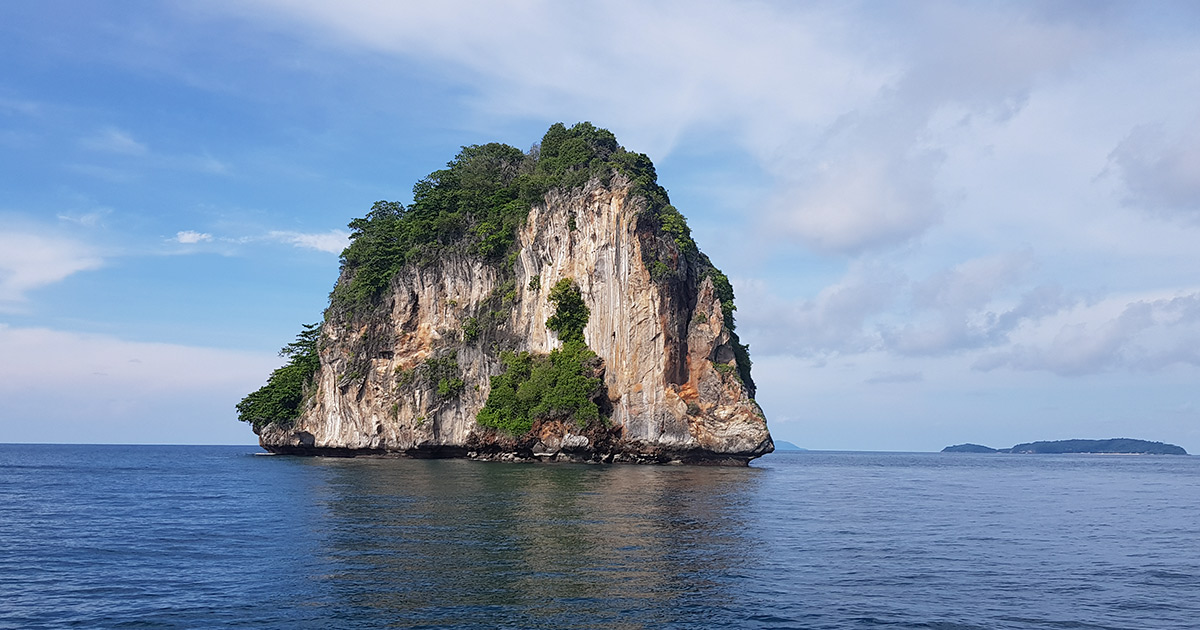
Koh Doc Mai (Flower Island) is one of the many tiny uninhabited limestone islands that surround the southern seas of Phuket. It's located 15 kilometres east-southeast from Chalong Bay and nearly half way to Koh Phi Phi. The 'big-name' dive sites nearby are King Cruiser Wreck, Shark Point & Anemone Reef. And Koh Phi Phi has at least ten great dive sites. So what's wrong with Koh Doc Mai? The answer is 'nothing at all.' It really is an excellent dive site that has something for everyone, except maximum depth. Macro lovers in particular regard Koh Doc Mai as the best dive site in Phuket!
The island is just 250 metres long and 90 metres wide, and lies lengthways almost north to south. The surrounding water is warm and usually very clear, but not deeper than 25 metres in most directions. The nearest small island is 6 kilometres southwest, and other larger islands are further away, but within sight from the surface. Even in the monsoon season (June - September) Koh Doc Mai gets protection from Phuket to the west. That means the sea conditions are suitable all year round for diving, and for liveaboard boats at the surface. Because of the layout of the island, it makes sense to dive the east side before lunch and the west side in the afternoon. Both sides of Koh Doc Mai have near-vertical walls, but the west side also has a plateau area at the northern end. On the east side there are two caves, but these are only for experienced divers. The larger cave entrance is near the bottom (18-22 metres) at the southern end, and the smaller one is a little shallower and further north, and it allows for experienced divers to enter and ascend to an air pocket, but only in very small groups.
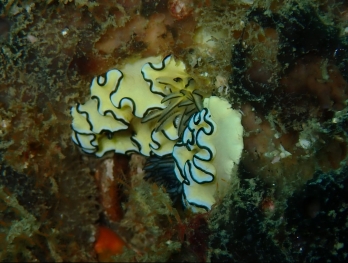 Glossodoris Nudibranch at Koh Doc Mai Phuket - Credit: Oom BoonraksaThere is lots to see here at Koh Doc Mai, but patient divers will see more than those who race along the reef. It's very easy to spend more than one hour on each side of the island, especially the eastern wall. Here, you can swim or drift as slowly as possible exploring the coral-covered wall. Even if the visibility is limited, you have plenty to see from the smallest nudibranchs and shrimps to large schooling fish, moray eels and pufferfish. Eagle-eyed and lucky divers might find a seahorse or Ornate Ghost Pipefish, and every now and then large pelagic species pay a visit.
Glossodoris Nudibranch at Koh Doc Mai Phuket - Credit: Oom BoonraksaThere is lots to see here at Koh Doc Mai, but patient divers will see more than those who race along the reef. It's very easy to spend more than one hour on each side of the island, especially the eastern wall. Here, you can swim or drift as slowly as possible exploring the coral-covered wall. Even if the visibility is limited, you have plenty to see from the smallest nudibranchs and shrimps to large schooling fish, moray eels and pufferfish. Eagle-eyed and lucky divers might find a seahorse or Ornate Ghost Pipefish, and every now and then large pelagic species pay a visit.
Currents are generally mild, and flow from north to south, or vice versa. So the best way to dive Koh Doc Mai is to jump in up current on your chosen side, and go with the current to the other end of the island. If the visibility is poor, then just ascend slightly and get as close as you can to the wall. Here you are likely to see species that you would miss on a day when the visibility is better. If the current is strong or you don't go as slowly as possible, you will end up at the other end of the island before the end of your 50-60-minute dive. And it's not easy or normal to continue around to the other side of the island on the same dive. The best way is to dive along the wall as slowly as possible, and at a depth and distance from the wall that best suits your scuba diving needs, skills and style.
Conditions at Koh Doc Mai
When to dive at Koh Doc Mai
You can dive at Koh Doc Mai all year round. November to April have the better weather & visibility. But during low season there are almost no other boats there, which is nice. Sea temperature doesn't change much.
What type of dive site is Koh Doc Mai
This is a small uninhabited island with no beach. On one side is a sheer wall with two small caves, and the other a wall and sloping reef.
Where is Koh Doc Mai?
Koh Doc Mai is between Phuket and Koh Phi Phi. It's nearer to Phuket (15km.) than it is to Koh Phi Phi (25km.)
How to get to Koh Doc Mai
It's a short ride from Chalong Pier for a day trip or liveaboard boat. Liveaboards can choose what time of day to dive there, whereas day-trip boats need to stick to a time schedule.
Who can dive at Koh Doc Mai
It's technically possible to do some of your Open Water course dives here, or even a Discover Scuba Diving introduction dive. However, most divers are certified, but you don't need Advanced or special certifications to dive here.
What marine life can you see at Koh Doc Mai?
There's a great variety of resident marine life at Koh Doc Mai. This includes Yellow Margin Moray Eels, many species of nudibranchs, pufferfish, lionfish, anemonefish, lobster, Moorish Idols, sea kraits, triggerfish, Bamboo Sharks, and shoals of fusilier & snapper. And don't forget that something large, such as a pelagic shark or ray, could pass by at any time.
Summary of Koh Doc Mai
Koh Doc Mai is a nice dive site. It's not extreme, and it isn't deep, but it has lots of good resident marine life and something for all divers' tastes. You can do one side of the island per dive and explore the walls close up. It's nearer to Phuket and less popular than Shark Point, Anemone Reef or King Cruiser Wreck, but many people see it as a btter dive site than them all.

